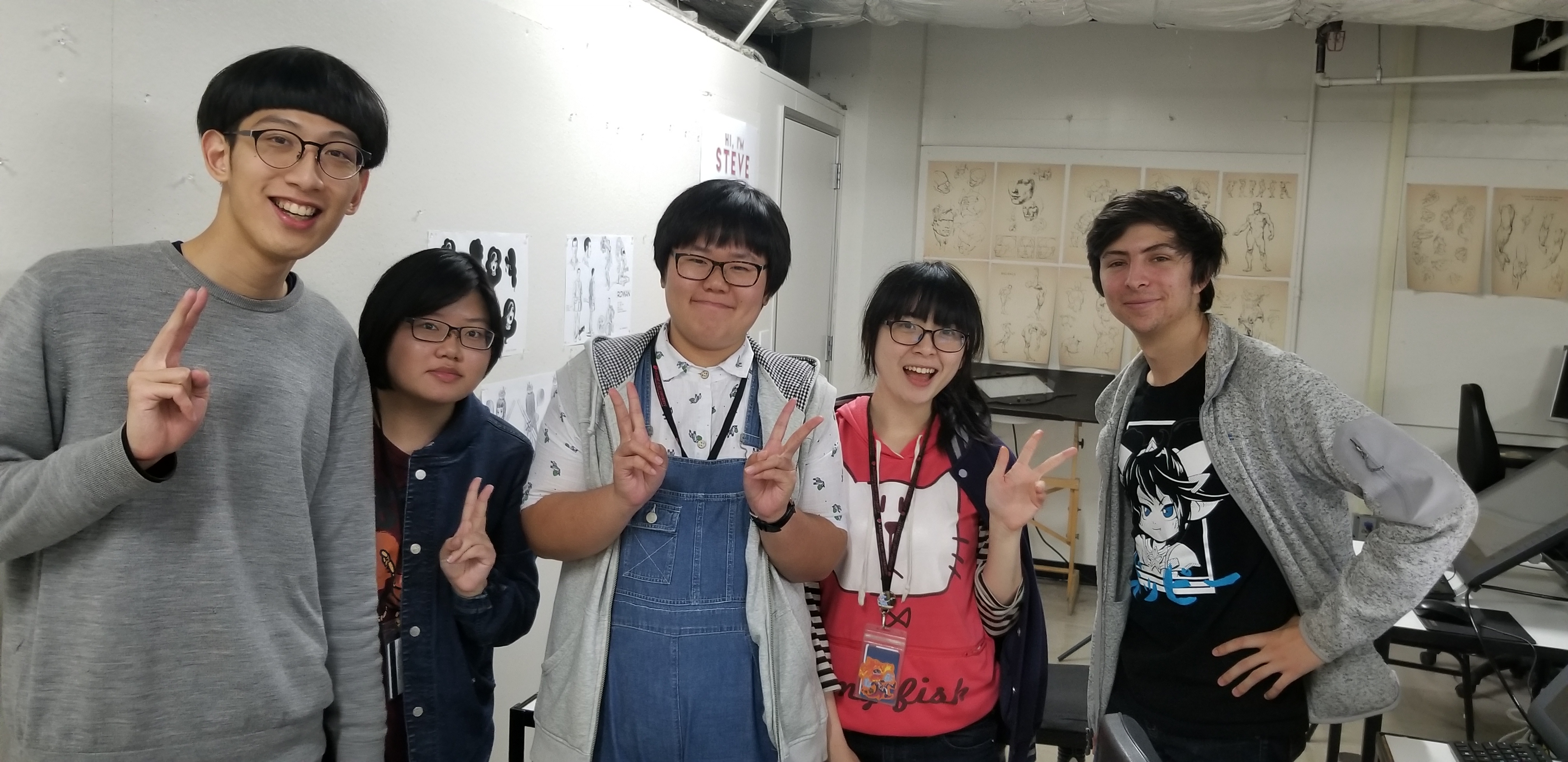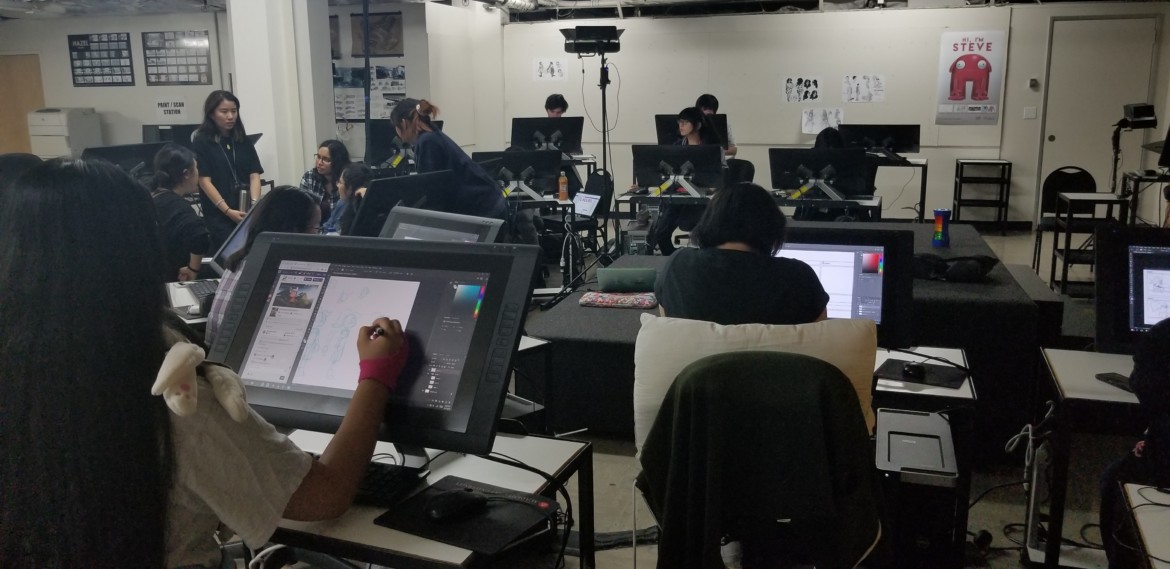The 16th annual 24-Hour Animation Contest challenged students to rely on each other to brainstorm and complete an animated short in one day
By Kyle Roe
The basement of 180 Montgomery Street was humming with activity all through the night of Friday, Oct. 5 and into the next afternoon, as students from the School of Animation & Visual Effects flexed their chops in the 2018 24-Hour Animation Contest. In its 16th year, the remote competition featured 219 teams that represented 49 schools located in nine different countries.
Academy of Art University contributed six animated shorts from six teams, each consisting of five people from every level of education. Each short had to be 30 seconds long, with the storylines and art planned out and created, from pre-production to post, within the competition’s 24-hour span.
All the videos entered in the contest were based around a single theme: “empathy.” The theme announcement, at 3 p.m. PST, signaled the start of the competition. How the students chose to elaborate on the theme was entirely up to them.

Participants brainstorm and start drawing in the early hours of the competition. Photo by Kyle Roe.
Gil Banducci, an Academy alumnus turned full-time instructor, led and supervised the event for the Academy teams. His role necessitated a hands-off, fly-on-the-wall approach that was supportive in nature.
“I am involved with it more in making sure that students are utilizing the resources, and have access to the resources here that our awesome department provides them, but really my involvement is to not be involved,” Banducci explained. “It’s their concept. It’s not my place to direct them on steps on what they need to do. It’s 100 percent [a] student competition.”
Banducci thought the contest provided valuable animation experience and exposure and was a useful exercise for students to hone their skills. “What is exciting is to observe, and see what they’ve learned in their classes, given and taught by many instructors here,” he elaborated. “It prepares them for the real world by teaching them [about] working with others, collaboration. That you really have to have a full understanding of the basics, all the way from art principle to all of the software and mediums involved.”

One of the four groups that participating in the 24-hour event. Photo by Kyle Roe.
One group, named Perfect Strangers, chose to focus on food’s potential to link people across cultures, continents, and nationalities. After huddling together to brainstorm story ideas, they spread out to different computers and began googling pictures of different foods and sketching ideas for scenes and characters.
According to Perfect Strangers member and first-year 3-D animation graduate student Susan Chen, “We’re a very diverse group. We’re from Spain, India, Mexico, Taiwan, and China. We wanted to do something that relates more about cultural differences. That relates more about how cultures can complete each other, in a certain way.” The story sought to combine food that “is not so common here” with food more familiar to Americans, and by doing so “create a new flavor, a new dish, or a new idea.”
“I think [the ideas] are the most important part, rather than the quality of the animation,” Chen said. “They know we only have 24 hours, and we’re only students. So, you can’t expect Pixar-level.”
Their finished product, “Spicy Soup” was the only Academy animation to place in the contest, taking the No. 28 spot. The characters were four different condiments living in the same cupboard. They fought over their differences and misunderstood each other until they were used in the same stew. Afterward, they gave each other a big hug and became the best of friends. The short’s upbeat jazzy soundtrack only brightened the mood and enhanced the characters’ cuteness and lovability.
One school, Sarasota, Florida’s Ringling College of Art and Design, clinched first through third place, winning over $15,000 in scholarship money, as well as animation software, textbooks, gift certificates, and prize packs from Pixar and Blue Sky. However, everyone involved gained exposure, points with their instructors, and a valuable new learning experience.
“In the real world, there’s not going to be an instructor that will tell you what to do,” Banducci said. “You really have to go with your instincts, go with your training.”
Though animation is an exercise in individual imagination and ingenuity, it’s essential to have a team with a diverse skill set. “Go with your trust, and really depend on each other,” Banducci continued. “Every student is really different and has various focuses within the production pipeline. This is an experience where students have to work with each other and see that every step in production is a chain. They’re linked to each other. They’re getting to experience that for the first time.”
